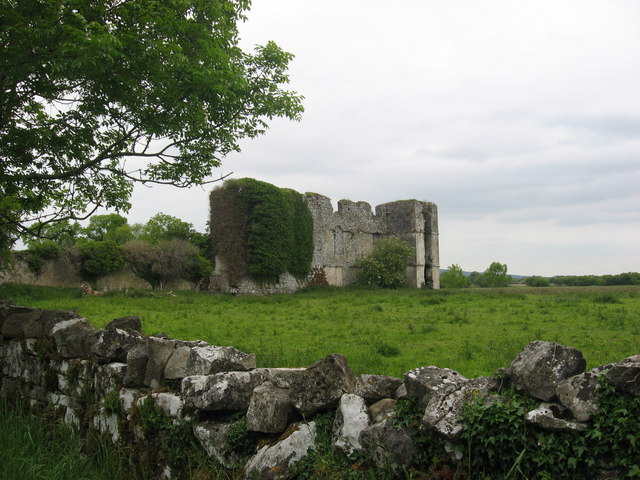Baron Longford Baron Annaly - Feudal Principality Seignory


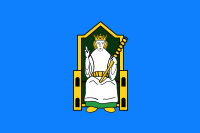
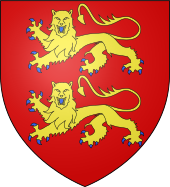
Baron AnnalyFeudal Baron of Annaly or Anghaile (also known as Conmaicne Maigh Rein) Kings of Annaly - Princes of Annaly and Kingdom of Annaly
Feudal Baron of Annaly or Anghaile and Teffia The Purchase of said rights in Fee Simple by Counselor George Mentz, Seigneur of Blondel, includes the right to the Seignory and Barony by any name it may be called or known in the County of Longford.
Principality or Kingdom of Annaly or Anghaile , Annaly or Annalie or Chieftain and Princes of Annaly (also known as Conmaicne Maigh Rein or Teffia in Latin). Today the region is called County Longford which was a part of Westmeath before it become separated.
Historiacally a Kingdom and Royal house was a legal 'Fons Honorum Seignory ' (with the rights to grant Titles of Nobility). Annaly (Irish Angaile) was a medieval kingdom in central Ireland where several regions of Annaly were granted to Baron Delvin of the Nugent Family. The Feudal Barony of Longford-Annaly or Anghaile and Teffia was transferred in The Purchase of said rights in Fee Simple by George Mentz whicy includes the right to the Seignory and Barony by any name it may be called or known in the County of Longford.
Its territory roughly coincided with modern County Longford. It was associated with several clans and ruled by the Lords of Westmeath and local clans who were the lords of the locale for almost seven centuries. The history of the Lords of Annaly ancient line is mentioned in the Annals of the Four Masters. The original Fearghal or Fergal ('man of valour') from whom the family claim descent was killed at Clontarf in 1014. His great grandfather Angall gave his name to the territory they possessed, Annally in Co. Longford. The Conmhaicne or Conmaicne were an ancient tribal grouping that were divided into a number of distinct branches that were found scattered around Ireland in the early medieval period. They settled in Connacht, where they gave their name to several territories.
Longford Origin - O’Farrell, Prince of Annaly, for Friars of the Order of St. Dominick, was probably the origin of the town of Longford. “ The foundation of a Dominican Abbey, in 1400, by Dhomna .
Delbna Iarthar or West Delvin has been inhabited and liberated by the Baron Delvin for over 600 years. Barons Delvin or Earls of Westmeath are Anglo Irish and descendants of Irish Kings of the pre-norman period. The ancient barony of Annaly Teffia was called Baron of Kilcoursey or Chief of Teffia.
In 1429 a great conflagration occurred in this Longford monastery, which was burned to the ground--the monks being left homeless; and such was the distress to which they were reduced that, on March 16th, Pope Martin V. issued a Papal Bull, granting a plenary indulgence to all persons who would aid the monks in rebuilding it. On March 12th, 1433, Pope Eugene IV. granted a Bull towards the same object, which he confirmed by a second one, issued on the 16th of July, 1438. In the year 1448, a terrible disease swept away masses of the Irish people, who were entirely ignorant of its nature, or the remedies for it. Amongst the list of those whom it took away, are found the names of Aedh-buy O’Feargeal, Henry Duffe M‘Fedechan, and Diarmud M‘Commay, “three righteous monks of the monastery,” These men were_interred, in all probability, in the precincts of the present ruins, situated in the grounds attached to the Protestant Rector’s residence. This place did not exist longer than the year 1530, because we find it recorded that this monastery, with certain lands attached, was granted in the fourth year of the reign of Philip and Mary—that is, about the year l552—to one Richard Nugent and his heirs, in capite, for ever.
"Lissardowlan as spelled today" History of the County Longford - Page 60 - Google Books Result- The Ancien Kingdom Seat of the Annaly Chiefdom. Lios na nUamhanach/Lisnanagh | Logainm.ie See Map of Where Lisnanagh Is - " 1377. The Castle of Lios-ard-ablha (now only marked by the moat of Lisserdowling near Longford in County Longford) was erected by John O’Farrell, Lord of Annaly and granted forever to Baron Delvin by King James. 1377 The castle of Lisardabhla, now Lizard or Lisardowlin, in the county of Longford, was erected by John O'Ferrall, lord of Annaly. A.D. 1378. * Granted to Nugent/Delvin 1609 Castle, Bawne and Town and Lands of Lisserdawle and 8 Cartrons ( 80 acres each) are granted to Richard Nugent Baron Delvin along with the Annalie Monastery of Inchemore or Inismore along with cottages and land of the Island. Baron Annaly of Westmeath Grant by Philip and Mary Citation of Place Names and Grants in Longford
Annaly Grant King Edward 1552 - Citation Markets and Custom Collections for Fower and Templeton and the Priory of Annalye along with the Granard monestary along with with lands of the O'Ferralls - See Below Templeton of Longford https://www.townlands.ie/longford/moydow/killashee/killashee/templeton-glebe/
Citation http://www.from-ireland.net/history-longford-annaly-farrell
Longford Origin - O’Farrell, Prince of Annaly, for Friars of the Order of St. Dominick, was probably the origin of the town of Longford. “ The foundation of a Dominican Abbey, in 1400, by Dhomna . In 1429 a great conflagration occurred in this Longford monastery, which was burned to the ground--the monks being left homeless; and such was the distress to which they were reduced that, on March 16th, Pope Martin V. issued a Papal Bull, granting a plenary indulgence to all persons who would aid the monks in rebuilding it. On March 12th, 1433, Pope Eugene IV. granted a Bull towards the same object, which he confirmed by a second one, issued on the 16th of July, 1438. In the year 1448, a terrible disease swept away masses of the Irish people, who were entirely ignorant of its nature, or the remedies for it. Amongst the list of those whom it took away, are found the names of Aedh-buy O’Feargeal, Henry Duffe M‘Fedechan, and Diarmud M‘Commay, “three righteous monks of the monastery,” These men were_interred, in all probability, in the precincts of the present ruins, situated in the grounds attached to the Protestant Rector’s residence. This place did not exist longer than the year 1530, because we find it recorded that this monastery, with certain lands attached, was granted in the fourth year of the reign of Philip and Mary—that is, about the year l552—to one Richard Nugent and his heirs, in capite, for ever.
"Lissardowlan as spelled today" History of the County Longford - Page 60 - Google Books Result- The Ancien Kingdom Seat of the Annaly Chiefdom. Lios na nUamhanach/Lisnanagh | Logainm.ie See Map of Where Lisnanagh Is - " 1377. The Castle of Lios-ard-ablha (now only marked by the moat of Lisserdowling near Longford in County Longford) was erected by John O’Farrell, Lord of Annaly and granted forever to Baron Delvin by King James. 1377 The castle of Lisardabhla, now Lizard or Lisardowlin, in the county of Longford, was erected by John O'Ferrall, lord of Annaly. A.D. 1378. * Granted to Nugent/Delvin 1609 Castle, Bawne and Town and Lands of Lisserdawle and 8 Cartrons ( 80 acres each) are granted to Richard Nugent Baron Delvin along with the Annalie Monastery of Inchemore or Inismore along with cottages and land of the Island. Baron Annaly of Westmeath Grant by Philip and Mary Citation of Place Names and Grants in Longford
Annaly Grant King Edward 1552 - Citation Markets and Custom Collections for Fower and Templeton and the Priory of Annalye along with the Granard monestary along with with lands of the O'Ferralls - See Below Templeton of Longford https://www.townlands.ie/longford/moydow/killashee/killashee/templeton-glebe/ 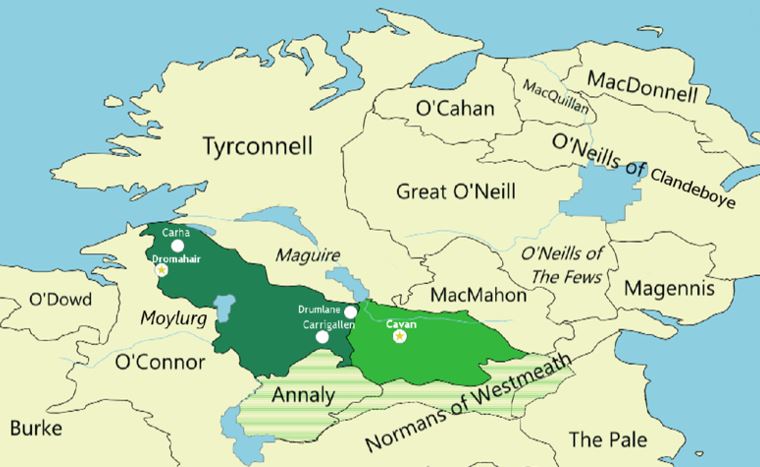
1620 Grants of Northern Annaly to Lord Baron Delvin VIII. 17.-—“ Grant from the King to Richard, Lord Baron of Delvin. —Longford County. The lands of Smere, 215a. of pasture, 147a. bog and wood, and 282a. of mountain; Cornedronee, 92a. pasture, and 206a. bog and wood; Rosseduife, Drumshanaly, and Faghowry, 1,000a. pasture, and 332a. bog and wood; Doonbeggan, 69a. pasture, and 66a. bog and wood; Cleynragh, 137a. pasture, and 100a. bog and wood; Birrenagh and Crott, 265a. pasture, 75a. wood and bog, and 197a. mountain; Aghagagh and Dromowry, 1 cartron and quarter, 230a. pasture; Aghekine and Lisgarry, 228a. pasture, and 106a. bog and wood ; Agherclogh, 7 8a. pasture, and 55a. bog and wood, with a common and a mountain belonging to the above lands, 212a. pasture and 638a. mountain; Ballyranell and Coolegawen, 50a.; Ballyneraghan, 111a.; Portegurtenwoghtragh, 50a. ; Portegurtenyeightragh, 50a.; Cartronvore, 27a. pasture, and 84a. bog and wood; also the lands of Creeve, adjoining the lands of Ballyneraghan; total, 2,970a. pasture, 2,288a. bog, wood, and mountain; rent, pasture lands, £ 30 7s. 8§d., Engl.; bog and wood, £4 15s. 4d. To hold in capite, by military service, with a provision that the said Richard, Lord Baron of Delvin, is not to assume the name, style, or title of ‘ the Great O’Farrall,’ in giving or paying any rent, taxation, or service, or divide the lands before mentioned according to the Irish custom of gavelkind, otherwise this patent to be wholly void.—All the lands granted under the commission for the plantation of Longford and Ely O’Carroll’s territory, are subject to the covenants set out in Art. N 0. 11. 17th.”
------------------ Queen Mary and Philip - grants "in capite" for knights service to Baron Delvin of all Lordships, heritaments, fisheries, mountains, and Castles of Lehra, The Abbey of Granarde, Granard, Foure, Belgarde,Citation of Lehra Granard Belgarde Barony Grant On many occasions this monastery was despoiled. First in 1066, when the original institution suffered in a dynastic dispute between the chieftains of Breffney, and again in 1272 when Hugh O'Connor, one of the Kings of Connaught, was at war with the English of the Pale. Two of its abbots became bishops of Clonmacnoise, one in 1398, and the other, John O'Mayle, in 1447. Mention is made of one of its abbots, Cornelius O'Ferral, in the Vatican Papers of Pope Innocent VIII. St. Patrick erected a church here and placed St. Guasacht over it; his feast is honoured on the 24th January. It is traditionally told that a labourer's cottage at the entrance of the village from Granard, covers the site of this ancient church, of which now nothing more is known. “At Lerha, in Longford (says O'Halloran), there was an abbey of Bernardines founded by Richard Tuite, an Englishman, Lord of Granard. The first monks of this abbey came from that of Our Lady, Dublin, of the Order of Clairvaux. Some say this house was founded in 1210. The founder was killed the following year at Athlone, by the falling of a tower, and was buried in Abbeylara.” Here also were buried many of the O'Farrells, Princes of Anghaile. Tuite came over to Ireland in the first invasion and settled at Granard. In 1199 he built the Castle of Granard,” to defend his territory against Ó Raballais (O'Reilly) of East Breffney. On the 30th of November, 1315, Edward Bruce burned the old town of Granard; on that day month, according to tradition, he plundered this monastery and made it winter quarters for a short period. The monks fled to Athlone, but returned the following Spring, when Bruce had departed. Richard O'Farrell, who became bishop of Ardagh, surrendered this abbey about 1541. Its possessions were very large, Tuite having enriched it with 18 cartrons of land, or about 1440 acres, perhaps more. The following record which I take from the Monasticon Hibernicum, will show that Abbeylara was an institution of great wealth and influence:“On the surrender of the abbey, the said Richard was seized of two carucates of land with their appurtenances in Clonmore, of the yearly value, besides reprises, of 13s. 4d.; four carucates in Lerha, of the yearly value, besides reprises, of 26s. 8d.; two carucates in Clonecryawe, of the yearly value, besides reprises, of 13s. 4d.; two carucates in Tonaghmore, of the yearly value, besides reprises, of 13s. 4d.; four carucates in Monktown, value, besides reprises, 26s. 8d., and the tithes of corn of the rectory of Monktown of the yearly value, besides reprises, of 40s.; also of a moiety of tithes of the rectory of Granard, of the yearly value, besides reprises, of 26s. 8d., a moiety of the tithes of the rectory of Drumloman, of the yearly value, besides reprises, of 13s. 4d.; and a moiety of the tithes of the rectory of Ballymachivy, of the yearly value of Ios. The rectories of Athlone, Levanaghan, Clonmacnoise, Tessauran, Ballyloughlo, and Reynagh, were all appropriated to this abbey.” “Lease under commission. Dublin, 26 September, IX of Elizabeth, to Sir Thos. Cusacke, Knt., and lady Jenett Sarcefeld his wife, the tithes of Ballenamanaghe in the Annale, of the lands of lord MacGennor in the Annale (these lands lay to the west of Lough Gowna), of the lands of Mount Carbré, of the lands held by the heirs of Morff O'Ferrall, of all the Maghirt of Granarde, of four granges in Granarde, of the grange of Tonaghmore, of the grange of Rincolle, Cowldony, Clontrall, and Deraghe; the rectories of Dromloman, Ballmakier, Ballekillen, and Strade (Street), possessions of the late monastery of Larro, alias Granarde, near the town of Granarde, in the Annale O'Farrell's country. £13 18s. 6d. for the possessions of the monastery of Granarde, provided they shall not alien their interest without licence of the deputy under the great seal, nor let to anyone unless they are English by both parents, and shall not levy coyn, livery, or other unlawful impositions —consideration 20 morks.”—Fiants of Elizabeth. It is traditionally told that Richard Nugent, better known as the Black Baron of Bobsgrove near Mountnugent, gave this monastery its final death stroke. And the following extract gives a colour of truth to this tradition : “IV. and V. Philip and Mary. This monastery (Abbeylara) situated in Le Annaly and the lands of Tonaghmore, Raicola," Cowldony, Cloncrawe, Derraghe and Bellamane! alias Ballymanaghe in Le Annaly, with two cartrons of land in Lickebla, parcel of the possessions of the said monastery, were granted for ever in capite to Richard Nugent, royalties excepted.” –Monasticon Hiber. Citation It is traditionally told that Richard Nugent, better known as the Black Baron of Bobsgrove near Mountnugent, gave this monastery its final death stroke. And the following extract gives a colour of truth to this tradition : “IV. and V. Philip and Mary. This monastery (Abbeylara) situated in Le Annaly and the lands of Tonaghmore, Raicola," Cowldony, Cloncrawe, Derraghe and Bellamane! alias Ballymanaghe in Le Annaly, with two cartrons of land in Lickebla, parcel of the possessions of the said monastery, were granted for ever in capite to Richard Nugent, royalties excepted.” –Monasticon Hiber. CITATION Abbeylara was an institution of great wealth and influence:“On the surrender of the abbey, the said Richard was seized of two carucates of land with their appurtenances in Clonmore, of the yearly value, besides reprises, of 13s. 4d.; four carucates in Lerha, of the yearly value, besides reprises, of 26s. 8d.; two carucates in Clonecryawe, of the yearly value, besides reprises, of 13s. 4d.; two carucates in Tonaghmore, of the yearly value, besides reprises, of 13s. 4d.; four carucates in Monktown, value, besides reprises, 26s. 8d., and the tithes of corn of the rectory of Monktown of the yearly value, besides reprises, of 40s.; also of a moiety of tithes of the rectory of Granard, of the yearly value, besides reprises, of 26s. 8d., a moiety of the tithes of the rectory of Drumloman, of the yearly value, besides reprises, of 13s. 4d.; and a moiety of the tithes of the rectory of Ballymachivy, of the yearly value of Ios. The rectories of Athlone, Levanaghan, Clonmacnoise, Tessauran, Ballyloughlo, and Reynagh, were all appropriated to this abbey.” “Lease under commission. Dublin, 26 September, IX of Elizabeth, to Sir Thos. Cusacke, Knt., and lady Jenett Sarcefeld his wife, the tithes of Ballenamanaghe in the Annale, of the lands of lord MacGennor in the Annale (these lands lay to the west of Lough Gowna), of the lands of Mount Carbré, of the lands held by the heirs of Morff O'Ferrall, of all the Maghirt of Granarde, of four granges in Granarde, of the grange of Tonaghmore, of the grange of Rincolle, Cowldony, Clontrall, and Deraghe; the rectories of Dromloman, Ballmakier, Ballekillen, and Strade (Street), possessions of the late monastery of Larro, alias Granarde, near the town of Granarde, in the Annale O'Farrell's country. £13 18s. 6d. for the possessions of the monastery of Granarde, provided they shall not alien their interest without licence of the deputy under the great seal, nor let to anyone unless they are English by both parents, and shall not levy coyn, livery, or other unlawful impositions —consideration 20 morks.”—Fiants of Elizabeth. The only vestige of remote antiquity worthy of special notice is a tumulus at one end of the town of Granard, said to have been a Danish rath, and called the Moate of Granard. It commands a view of six or seven surrounding counties. Though several ruins of monastic buildings may still be traced, few memorials of their history have been preserved. The erection of those at Ardagh, Lerha or Granard, Clonebrone, and Drumcheo, is attributed to St Patrick. Those of Longford, Abbeyshruel, and Ballynasaggard, were founded by members of the O'Ferral family. Abbey Deirg was built by O'Quin. A house of gray friars, dedicated to St John, gave name to Johnstown. At Lanesborough are some ruins said to have been part of a monastery, but no historical trace of such a foundation there can be discovered. The island of Inchimore in Lough Gawnagh, and those of Innisbofin, Innisclothran, and Innismacsaint, in Lough Reagh, were each at some remote period the site of a religious house now in utter ruln. The castle of Longford, once the mansion of the O'Ferrals, was taken at the commencement of the war of 1641, and the garrison slaughtered after their surrender upon terms. Castle Forbes, in the same neighbourhood, made a gallant resistance during the same period, under the command of the widow of Sir Arthur Forbes, until reduced by famine. Rathcline, placed in a highly romantic position near Lanesborough, was dismantled by Cromwell, and burned in the subsequent wars between William and James. The castles of Ballymahon, Barnacor, and Castlecor, were built to command passes over the Inny. Of these, the last named has suffered, not only by the ravages of time, but by excavations made in order to discover concealed money, imagined to have been buried in its interlor. The seats of the gentry are numerous. Carrickglass on the Camlin, belonging to the Newcomen family, is a fine residence; as is also Castle Forbes, the seat of the Earl of Granard. Edgeworthstown will long be noted in the annals of British literature as the residence of the Edgeworth family. Castlecor, the seat of the Hussey family, and said to have been modelled after the round tower of Windsor Castle, is more remarkable for eccentricity of appearance than architectural elegance or domestic convenience. Tirlicken was built by Lord Annaly, near the ruins of a former edifice of the same name, the seat of Sir
Grant 1552 - Holy Island - Inchcleraun Island, Lough Ree With the government showing little inclination to reach a more permanent settlement with the O’Farrells, Delvin led a raid across Lough Ree shortly before Christmas 1548.21 Despite opposition from the nearby Dillons, it seems that Delvin succeeded in gaining a foothold in the southern reaches of the O’Farrell lordship. In 1552 the crown granted the dissolved monastery of Holy Island, Lough Ree, to the baron, together with associated lands and tithes.22 This was more than a mundane grant of ecclesiastical land in one’s county of residence, which many peers, gentry and officials received: it must be viewed in the context of mid-Tudor expansionism. The government was willing in 1553 to nominate a ‘captain and governor’ of the O’Farrell Boy branch, yet allowed Delvin to build up a landholding profile within the branch’s sphere of influence on the banks of Lough Ree. Lord Deputy Croft and his advisors described these lands as in ‘a waste, wylde Countrey amonge the yrishe where lytle obedyence doth contynue’, but Delvin had announced his intention to fortify his new territory.23 The Baron Delvin was also granted the monastic site at Granard, in the northeast of the Annaly lordship in what is now called the County Longford; this also represented a projected expansion of English influence. Before the 15th century Granard Abbey had been an exclusively English foundation, but papal order forced it to admit Gaelic men. The house quickly lost its English identity, and fell completely under O’Farrell patronage.24 Thus Delvin’s acquisition of Granard represented an effort to reincorporate former English church lands into English society. Confirmation of the achievements of Baron Richard in enhancing the importance of his house came in 1553, when he joined O’Connor Roe in a devastating raid on the MacDermots of Moylurg, a lordship situated west of the Annaly and a considerable distance from Delvin territory.25
County Longford Monastery of Holy Island Lough Ree also
Granted to Lord Delvin in 1552 LX. 21. — " King's letter to Sir Richard Nugent, Lord Delvin, doubting lest there might be omission or misrecital in former letters patent, and that in order that he may securely and quietly enjoy his possessions, to have a new grant of the late dissolved monastery or abbey of Inchmore, alias Inishmore, in the County of Longford, and the late dissolved priory and manor of FORE or Fower, in the County of Westmeath, and all his other lands and tenements, subject to such tenures, rents, and services as they appear of record formerly to have been subject to —
Market and Fair and Carnival CustomPg. 116 HISTORY OF THE COUNTY LONGFORD. Grant 1605 Market and Fair Longford County. Licence to hold a Thursday market and a fair on the 1st of AugustDo. OXIII.— " Grant from the King to Sir Richard, Lord Delvin.— Longford County. Licence to hold a Thursday market and a fair on the 1st of August, and two days at Longford, with the usual courts and fees ; rent, 6s. 8d., English. — 7 Dec. 3rd." Shrove Tuesday (also known in Commonwealth countries and Ireland as Pancake Tuesday or Pancake day) is the day in February or March immediately preceding Ash Wednesday (the first day of Lent), which is celebrated in some countries by consuming pancakes.
Rathcline Castle, Lanesborough, Co. Longford
Elizabeth
R. 56. The Queen to the Lord Deputy and the Lord Chancellor. 1597 https://books.google.com/books?output=text&id=YEyV_RKTt18C&dq=grant+ardagh+delvin&jtp=439 |
About Longford Pedigree of Longford Annaly Honour of Annaly Longford The Seigneur Lords Paramount Ireland Market & Fair Chief Captain Kings Forces Chief and Captainship of The Annaly Lord Governor of Annaly Prince of Annaly Principality Chief of the Annaly Princes of Longford Feudal Princes of WestMeath Count of the Palatine of Meath A Barony Explained Princes of Annaly Pedigree Sovereign Title Succession Lord of St. Brigit's Longford Abbey Est. 1578 Lord of the Pale Commissioners of the Peace Tenures Abolition Act 1662 - Rights to Sit in Parliament Law of Ireland Seneschal of Meath List of Townlands of Longford Annaly English Pale Kings of Hy Niall Colmanians Court Barons News Irish Kingdoms Lordships of Granard Fishing & Dams Rights Rights of Lords & Barons Datuk Seri Baliwick of Ennerdale Moneylagen Feudal Barons Styles and Dignities Lord Baron Longford Baron de Delvyn Longford Map Lord Baron of Delvin Baron of Temple-Michael Baron of Annaly Kingdom Annaly Lord Conmaicne Baron Annaly Order of Saint Patrick Baron Lerha Granard Baron AbbeyLara Baronies of Longford Princes of Conmhaícne Angaile or Muintir Angaile Baron Lisnanagh or Lissaghanedan Baron Moyashel Moiety of Ardagh Baron Rathline Abbeys of Longford Grants to Delvin Baron Inchcleraun HOLY ISLAND Quaker Island Longoford CO Abbey of All Saints Hereditaments Kingdom of Uí Maine Baron Dungannon Baron Monilagan - Babington Lord Liserdawle Castle Baron Columbkille Kingdom of Breifne or Breny Baron Kilthorne Baron Granarde Count of Killasonna Baron Skryne Baron Cairbre-Gabhra AbbeyShrule Fiefs of the Islands Feudal Westmeath The Island Lords Fief Worship Channel Island History Fief Blondel Fief Blondel Merchandise Events Blondel and King Richard Fief Coin Feudal Guernsey Titles The Feudal System Flag & Arms Castle Site Map Disclaimer Blondel Myth Dictionary Honorable Colonel Mentz Order of St. Columba Valuation of Principality & Barony of Annaly Longford
Feudal Baron of Longford Annaly - Baron Longford Delvin Lord Baron &
Freiherr of Longford Annaly Feudal Barony Principality Count Kingdom of Meath - Feudal Lord of the Fief
Blondel of the Nordic Channel Islands Guernsey Est. 1179 George Mentz
Bio -
George Mentz Noble Title -
George Mentz Ambassador - Order of the Genet
Knighthood Feudalherr - Fief Blondel von der Nordischen
Insel Guernsey Est. 1179 * New York Gazette ®
- Magazine of Wall Street - George
Mentz - George
Mentz - Aspen Commission - Ennerdale - Stoborough - ESG
Commission - Ethnic Lives Matter
- Chartered Financial Manager -
George Mentz
Economist -
George Mentz Ambassador -
George Mentz - George Mentz Celebrity -
George Mentz Speaker - George Mentz Audio Books - George Mentz Courses - George Mentz Celebrity Speaker Wealth
Management -
Counselor George Mentz Esq. - Seigneur Feif Blondel - Lord Baron
Longford Annaly Westmeath
www.BaronLongford.com * www.FiefBlondel.com |
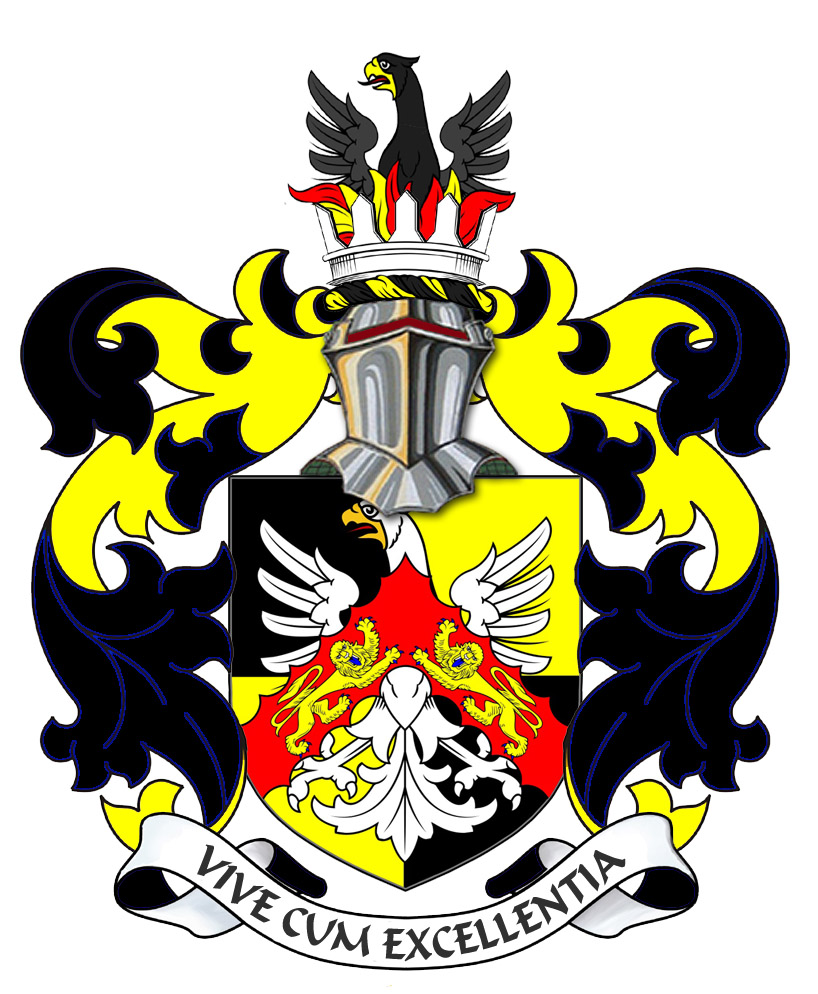

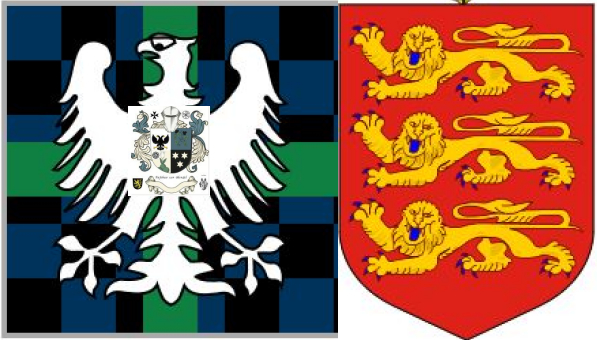

Commissioner George Mentz - George
Mentz Law Professor - George
Mentz Economist
George Mentz News -
George Mentz Illuminati Historian -
George Mentz Net Worth
The Globe and Mail George Mentz
Get Certifications in Finance and Banking to Have Career Growth | AP News




